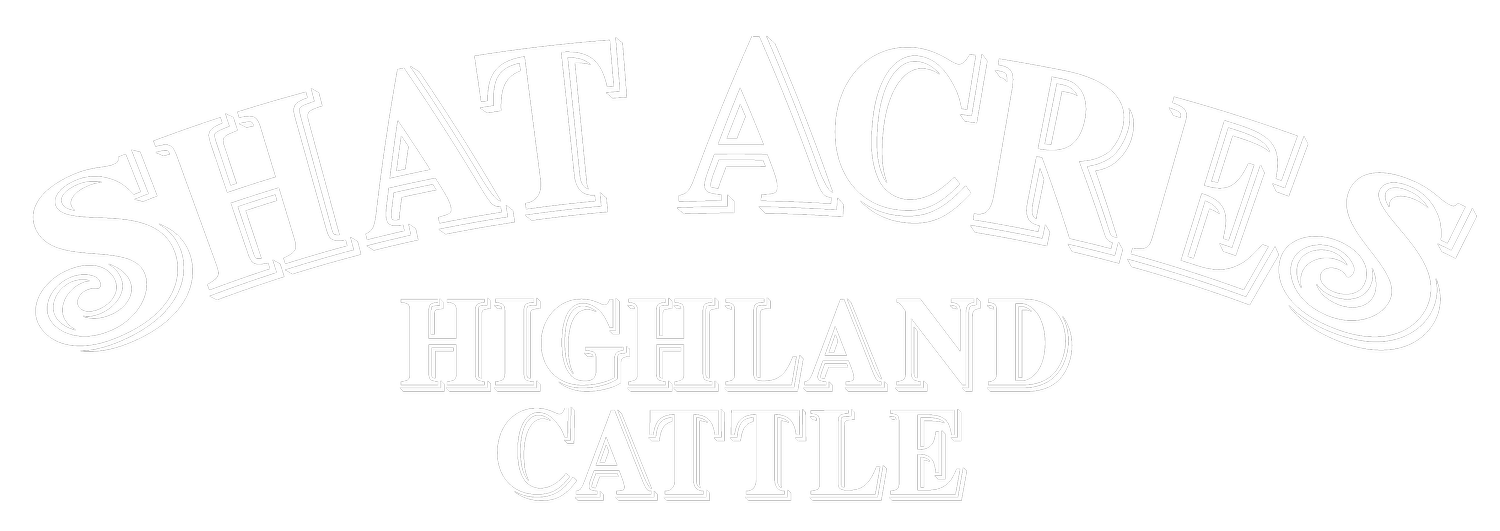Part 1: Evaluating the Genealogy of Orison of Canela
Written by Randall Arms:
"This is another commentary that I wrote in Spanish and due to the poor translations English speakers are getting on their end, I’ve taken the trouble to translate more accurately the original content. I apologize that this makes the chronological order of the commentaries inversed, but I’ve stipulated Part 1,2 & 3 in the title in order to facilitate reading them in a logical sequence.
Evaluating Genealogy of Orison of Canela
Part 1
Many of you have been following the gestation of our Scottish Highland heifer that was past her probable due date (between the 11th and 24th of March). Finally, Shat Acre Ursula brought into the world a lovely and healthy little bull calf at 12:30 am on March 28, 2024. This calf is a product of artificial insemination with frozen semen from a bull named AHR Orison Lachlan who himself is a result of inseminating with the Scottish bull Orison of Culfoich.
The reason we chose this bull Orison Lachlan, is because his dam is Shat Acre Cadence, a daughter of Shat Acre Lance’s Lucky and Shat Acre Caitlyn. As you’ve probably already noticed, the bull’s maternal line is from the same breeding establishment where our Shat Acre Cinnamon Ursula was born.
We looked to purchase Ursula from this fold because it’s the oldest closed maternal herd of Scottish Highlands in the USA. This fact has made for a treasure full of old traditional lineages that are very prepotent due to the amount of inbreeding and line-breeding that has been used over the years.
At this time, I could dig much deeper into the genealogy of Orison of Canela, but just as a superficial example of how interesting of a pedigree he has, I’ll inform you of the following inbreedings and line-breedings that are present in his family tree:
Inbreedings
Who’s Hill Scorpio
4Sx3Dx3D
Lance of Gordon’s Fold
4Sx5Sx7Sx4Dx4D
Shat-Acre Cinnamon
4Sx4Dx4D
Line-breedings
Shat-Acre Beauty
6Sx7Sx5Dx5Dx6Dx6xD (6 spots)
Shat-Acre Herman
6Sx7Sx6Dx6Dx7Dx7D (6 spots)
Shat-Acre Billie (1971)
6Sx8Sx9Sx7Dx7Dx8Dx8D (7 spots)
LC King’s Pride
7Sx7Sx8Sx8Sx9Sx9Sx10S
7Dx7Dx8Dx8Dx10Dx10Dx11D
7Dx7Dx8Dx8Dx10Dx10Dx11D (21 spots)
Here one can notice how more reduced the gene pool is. This should result in more homozygous genes, that after so many years of selection within the same lineages, where poor or even deleterious homozygous genes expressed are culled, what is left in the fold are a higher percentage of very homogenous and prepotent genetics.
It is bloodstock like these that start stamping a very similar type of animal in phenotype, performance and temperament, all of which are characteristics that have been selected for during more than a half a century.
It is for this reason that the bovine livestock in Shat Acre are largely specimens with a phenotype in accordance with the traditional breed description, with good muscle definition, with very flat dorsal lines, with good udders that produce ample amounts of high fat milk and which conserve the hardy, desirable characteristics that define the foundational purpose of the Scottish Highland since its origins.
One of the rustic characteristics of the breed is the thick, double hair coat. Since Shat Acre is located in the state of Vermont, which is very near the Canadian border, the practical reality is that the cattle’s tolerance to snow, ice, hail and very low ambient temperatures is put to test in the most adverse of conditions. Being exposed to such conditions assures that natural selection also is in accordance with the functional characteristics of the breed.
The fact that this fold has been using inbreeding for more than half a century, gives thought to the idea that they could also benefit from occasional freshening of bloodlines within the breed. This could reinforce areas which have not been selected for by the administrative decision makers. This is not a criticism, as we must make note that the more numerous that selection criteria is, the slower the progress is made. So it behooves breeders to determine the most important choices for selection and not focus on prioritizing others until the first ones meet a desired level of success.
Still, there are areas such as the shape of horns, perfect leg alignment and articular angles, and in a minority of cases certain bloodlines that need to achieve the docility of the rest of the fold, that are examples of areas that could be strengthened, not by selection, but rather by the infusion of different genetics that are strong in these areas.
In my judgment, when incorporating new bloodlines into old breeding establishments with their own particular homogeneous characteristics, additional benefit can be derived from the use of long standing foundational genetics from the country of origin, Scotland. However, to not lose the accomplishments of more than half a century of selection in Shat Acre, it is my thought that using a bull that is a product of proven Scottish lineage crossed on a Shat Acre cow of a somewhat distinct maternal
line, could help establish a desirable heterosis, while incorporating beneficial genes for characteristics not having been emphasized in the selection criteria of the fold. By also incorporating old Scottish bloodlines you also maintain the priorities of the survival characteristics in the more environmentally challenging sectors of Great Britain.
Well, that is enough said for now, as Orison of Canela fans prepare to follow his development over the coming month and maybe even years. The fact we’ve chosen to continue with the name Orison is auto-explicatory. If no one has guessed yet, the second part of this bull calf’s name (of Canela) is a Spanish translation for the word “Cinnamon”. This matriarch that appears three times in Orison of Canela’s pedigree has a very particular genetic make up that explains why she has stamped so much quality on her offspring and their descendants in this renown Scottish Highland fold… but that’s a story for another day.
